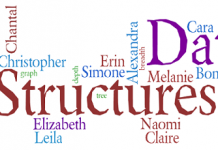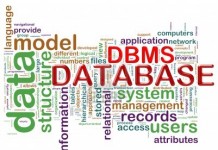Dear Aspirants,
Welcome to the Professional Knowledge Section in Affairscloud.com. Here we are providing sample questions in Data Structures. It will be useful for the IBPS SO IT officer and SBI Assistant Manager(System). We have also included some important questions that are repeatedly asked in previous exams.
- Which of the following is a mathematical-model with a collection of operations?
A. Algorithm
B. Linear Search
C. Hashing
D. Abstract Data Type
E. None of theseD. Abstract Data Type
Explanation:
Abstract Data Type is a mathematical-model with a collection of operations. It describes a container which holds a finite number of objects where the objects may be related through a given binary relationship. - The Standard Template Library (STL) uses which of the following binary relationships?
A. Linear ordering
B. Partial ordering
C. Hierarchical ordering
D. All of these
E. strict weak orderingE. strict weak ordering
Explanation:
The Standard Template Library (STL) uses the concept of a strict weak ordering. A Strict Weak Ordering is a Binary Predicate that compares two objects, returning true if the first precedes the second. - Which is the form of automatic memory management?
A. Concatenation
B. Dynamic Memory Allocation
C. Garbage Allocation
D. Throughput
E. None of theseC. Garbage Allocation
Explanation:
Garbage collection is an automatic memory management feature in many programming languages, such as Java and languages in the .NET framework. - Which is an effective technique to calculate the direct location of a data record?
A. Binary Search
B. Linear Search
C. Tree Search
D. Hashing
E. None of theseD. Hashing
Explanation:
Hashing is an effective technique to calculate the direct location of a data record. - In a binary tree, if a node having two children is deleted, it is replaced by its ?
A. Preorder predecessor
B. Inorder successor
C. Preorder successor
D. Inorder predecessor
E. None of theseB. Inorder successor
Explanation:
In Binary Tree, Inorder successor of a node is the next node in Inorder traversal of the Binary Tree. - It is a binary tree in which every level, except possibly the last, is completely filled, and all nodes are as far left as possible is known as?
A. Binary Search Tree
B. Full Binary Tree
C. Complete Binary Tree
D. Incomplete Binary Tree
E. None of theseC. Complete Binary Tree
Explanation:
Complete Binary Tree: It is a binary tree in which every level, except possibly the last, is completely filled, and all nodes are as far left as possible. - It is a binary tree in which every node other than the leaves has two children is known as?
A. Binary Search Tree
B. Full Binary Tree
C. Complete Binary Tree
D. Incomplete Binary Tree
E. None of theseB. Full Binary Tree
Explanation:
Full Binary Tree: It is a binary tree in which every node other than the leaves has two children. - A full binary tree with n leaves contains how many nodes?
A. n leaf nodes
B. n-1 non leaf nodes
C. n non leaf nodes
D.n-1 leaf nodes
E. None of theseC. n non leaf nodes
Explanation:
A full binary tree with n leaves contains n non leaf nodes. - Which of the following takes O (1) time to find a data?
A. Binary Search
B. Linear Search
C. Tree Search
D. Hashing
E. None of theseD. Hashing
Explanation:
Hashing takes O (1) time to find a data. - One can convert a binary tree into its mirror image by traversing it in _______
A. In order
B. Pre order
C. Post order
D. Any order
E. None of theseC. Post order
Explanation:
One can convert a binary tree into its mirror image by traversing it in Post order.
AffairsCloud Recommends Oliveboard Mock Test
AffairsCloud Ebook - Support Us to Grow
Govt Jobs by Category
Bank Jobs Notification





